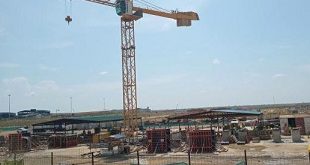
Sub-region avoided recession in 2020 but political fragility and limited economic diversification impacted growth in some countries
Kampala, Uganda | RONALD MUSOKE | East African economies will fully recover from the COVID-19 induced recession in 2023, thanks to increased roll-out of vaccines, recovery in the global economy, rising commodity prices, and growing economic diversification in the region, according to the latest economic outlook for the region published by the African Development Bank (AfDB).
The report titled “Debt Dynamics in East Africa: The Path to Post-Covid Recovery” reviews the socio-economic performance of 13 countries in the region including; Uganda, Burundi, Comoros, Djibouti, Eritrea, Ethiopia, Kenya, Rwanda, Seychelles, Somalia, South Sudan, Sudan and Tanzania.
According to the report published on Oct.28, while East Africa is undergoing a shift toward a more service-oriented economy, some countries are experiencing de-industrialization.
Until 2020 when COVID-19 invaded the region, East Africa was the fastest growing economy on the continent but it appears, the sub-region will cede its position to central and southern Africa in 2021 and to North Africa in 2022 due to strong recoveries expected in those regions.
Economic growth in East Africa is expected to recover to an average of 4.1% in 2021, up from 0.4% posted in 2020, according to the outlook. In 2022, average growth is projected to hit 4.9%.
But, in order to accelerate recovery and build post-Covid-19 resilience, the report recommends that countries should accelerate structural transformation through digitalization, industrialization, economic diversification and consolidation of peace, security, and stability.
“A mix of policy interventions is needed to accelerate East Africa’s economic recovery and build post-Covid-19 resilience,” said Nnenna Nwabufo, the AfDB’s Director General for East Africa.
Nwabufo said some of these interventions include scaling up vaccinations, designing and implementing economic stimulus packages and stabilizing public debt by dealing with debt related to state enterprises.
She noted that the region’s resilience in 2020 was due to relatively higher economic diversification and governments’ swift policy responses to counter the pandemic’s impacts.
But Abdirahman Dualeh Beileh, the Minister of Finance of Somalia warned the pandemic could continue to impede progress toward inclusive growth.
“The contraction of economic activities, increase in fiscal deficits due to high public spending to respond to the Covid-19 pandemic amidst reduced public revenues, and exchange rate depreciation following reduced income from commodity exports, created fiscal and debt distress risks in the region in 2020,” Beileh said.
Marcellin Ndong Ntah, a lead economist at AfDB, warned that the risks to the region’s positive outlook remain substantial due to the uncertainties surrounding the longevity and severity of the pandemic, the slow uptake of vaccines, rising global oil prices for the non-oil exporting countries in the region, the slow pace of structural transformation, conflicts and civil unrest, and weather-related shocks and locust invasions in the region.
According to the report’s findings, Covid-19 containment measures and global supply and demand disruptions hit businesses and livelihoods hard and increased poverty, while political fragility in some countries and limited economic diversification in others were significant impediments to growth.
The report notes that much as East Africa is the only region that avoided a recession in 2020, thanks to better performance in agriculture, sustained public spending on large infrastructure projects and increased economic integration, political fragility in some countries and limited economic diversification in others were major hurdles to growth.
But, the report also notes how East Africa is experiencing a progressive change in the composition of GDP, from predominantly agriculture to services. Still, the transition to higher value-added economic activities—which signals structural transformation has been slow. COVID-19 has also had diverse impacts across the region.
Countries that are highly dependent on tourism such as Seychelles have been hit hardest while those with a more diversified sectors such as Kenya experienced fewer adverse impacts. For commodity exporters like Tanzania, they have been slightly more resilient due to rising prices for commodities particularly.
Fiscal deficits widens
However, East Africa’s fiscal deficits widened in 2020, thanks to increased public spending in response to COVID-19 amid falling domestic containment measures and disruptions in global supply chains that took a toll on the region’s economies. Still, fiscal deficits were lower than in other regions of the continent.
According to the report, Uganda remains the only country in the region whose economy is expected to report a bigger fiscal deficit; widening from 6.6% in 2020 to 7.3% in 2021 before narrowing to 6% in 2022.
Uganda’s widening fiscal deficit in 2021 will be driven by the continued need for investments in roads, power, and water, with the Ministry of Finance estimating a potential funding gap of Shs 2 trillion in 2021.
Similarly, the current account deficits widened as exports fell during the pandemic. Monetary policy was accommodative to support the economic recovery and inflation remained stable and in single digits in 10 of the region’s 13 countries—reflecting moderating food inflation and lower energy inflation.
COVID-19 related shocks have increased poverty in the region, with the share of people living in extreme poverty rising to 35% in 2021 or 134.3 million people. All told, COVID-19 caused 12.3 million people in the region—3.4% of the 2019—to fall into extreme poverty.
New measures
Meanwhile, several East African countries have implemented measures to mitigate the impacts of the pandemic, including emergency responses to strengthen healthcare, fiscal and monetary policy stimulus packages to support economic activity, and increased social spending to protect vulnerable livelihoods and groups.
Other measures included; rationalizing non-priority spending to create fiscal space as revenues fell, and rescheduling debt service obligations to free up resources. These policy measures, according to the report, have helped most of the region’s countries avoid sliding into recession. The measures have also helped reduce the number of vulnerable populations falling into poverty.
But long term strategies—like establishing industrial clusters to accelerate structural transformation and diversification—are needed to consolidate the short term gains achieved through the policy measures.
The report goes ahead to focus on the dynamics of public debt in East Africa. In recent years, the region’s public debt has risen, driven by a slowdown in real GDP growth, substantial nominal exchange rate depreciations in countries with a large share of foreign currency debt, emergency spending measures in the health sector and reduced inflows of commodity revenues.
East Africa’s external public debt, like in many African countries, has become more market-based and less concessional—increasing rollover risks because reduced foreign currency reserves, high interest expenditure relative to revenues, and limited refinancing access to international markets, pushed several countries to enter the high risk of debt distress.
In addition increased non-debt equity or donor-funded capital, along with innovative financing instruments and risk-sharing tools, must be explored to combine funding for East Africa’s development needs.
Emmanuel Pinto Moreira, Director of the Bank’s Country Economics Department, said many East African economies continue to need short-term debt relief and emergency external financing from multilateral lenders. He added that many had received budget support under the Bank’s Covid-19 Response Facility, and emergency financing from the International Monetary Fund.
Economic experts attending the launch called for better economic governance, notably clearing domestic arrears, improving debt management and transparency, and dealing with debt related to state-owned enterprises.
“For countries with substantial external financing risks, innovative financing instruments like non-debt equity, risk-sharing with the private sector, including through collateralization and increasing foreign investor participation in local-currency debt markets, should be explored to diversify the sources of development finance,” said Edward Sennoga, lead economist at the Bank. This, he added, will insulate the region’s economies from global volatility shocks.
Louis Kasekende, the executive director of the Macroeconomic and Financial Management Institute of Eastern and Southern Africa, pointed out that policies to diversify public financing sources, improve public revenue mobilization and prioritize infrastructure investments will be critical to ensure debt sustainability.
“Public debt, if used correctly, can help boost essential services, leading to improved economic growth,” he said.
****
 The Independent Uganda: You get the Truth we Pay the Price
The Independent Uganda: You get the Truth we Pay the Price



